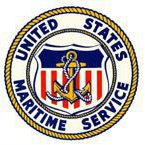-
Posts
2,254 -
Joined
-
Last visited
-
Days Won
11
Content Type
Profiles
Forums
Events
Store
Downloads
Gallery
Everything posted by Kiipu
-
The red painted character on the tang looks like the katakana character オ. オ = O, the letter and not the number zero 0.
-
The column in the middle is a name of a company. The last character translates to "store." 本??株式會社??店
-
The only thing that comes to mind is a post by Stegel back in February 2022. Yellow or Gold Tassels on Gunto, Post #13
-
Try doing a search on the Japanese term kanbun 漢文. About the correct translation of certain sword signatures
-
Made after the war for sale in the army's PX store. It made extensive use of wartime made parts.
-
Is that a large or small Seki 関 stamp? Can you measure the height of the stamp? Subassembly Number 一一五三 = 1153.
-
Based upon the bottom half of a snap fastener on the scabbard's leather combat cover, I think the hilt had some sort of leather strap for retaining the scabbard. Two different kinds come to mind, one that was a sort of leather seppa with strap while the second one wrapped around the fuchi. Both kinds then passed passed through the crossguard and snapped onto the scabbard.
-
A last name that can be pronounced as either Kuroda or Kurota. 黒田 Kuroda or Kurota
-
大 large or the first character in a name?
-
Early Type 95 Scabbard or am I mistaken?
-
Joseph, attached are pictures of serial number 13732 made by Suya. This is in the same serial number range as yours. Note the subtle differences between them.
-
Time is short today but it is a known reproduction. Ran into them some five years ago.
-

Attention Mantetsu Owners: A Survey
Kiipu replied to Bruce Pennington's topic in Military Swords of Japan
In the article, I noticed that Lieutenant General was used but then the Japanese pronunciation was given as shosa [Shōsa 少佐 Major]. Secondly, it seems he was a 軍属 gunzoku. -

Attention Mantetsu Owners: A Survey
Kiipu replied to Bruce Pennington's topic in Military Swords of Japan
Lieutenant General Okada's first name was not mentioned in the article. He graduated from Osaka University in 1934 with a degree in chemical engineering. He worked for Mantetsu after graduation in a research center. In 1944, he was commissioned in the army. Captured by the Russians and did not return to Japan until 1966. When interviewed, he was 82 years old. -

Attention Mantetsu Owners: A Survey
Kiipu replied to Bruce Pennington's topic in Military Swords of Japan
King, Dan. “Chatting Vets, Part VI: Subject: Lt. General Okada.” Banzai Issue 127 (November 1992): pages 300–303. -
An anchor-in-circle Type 97 with a stamp on the bottom of the hilt. Very interesting. WW2 Japanese Type 97 Navy Officer Sword T97 Katana Naval Arsenal Stamp WWII
-
Flagging this as it has a double-stamped 昭 in sakura. Undated but signed by Amahide 天秀. Mal has a monograph about this swordsmith. WW2 Japanese T98 Army Officer Sword with Field Scabbard WWII Type 98 Katana
-
In the Suya 146K to 149K serial range, brass crossguards were the majority while steel was the minority. So both will show up, but just that the brass is more common. Looks OK to me. For comparison, see serial number 148224. Help with a bit of information on this type 95
-
I did a brief intro for guntō signatures. I covered the parts that come before and after a name. Reading Guntō Signatures For gendiatō signatures, I use Sesko's Gendaito Project to look them up. Gendaito Project
-

type 19 kyu gunto dress swords, i love them.
Kiipu replied to lonely panet's topic in Military Swords of Japan
Not a dress sword, but does has a scabbard release latch mounted on the bottom of the hilt. Always thought it was interesting. A little introduction and my first kyu gunto! -
I have noticed small inspection marks on that side of the Type 32 blade; however, they are usually centered on the blade and not off to the side like yours. What model is your Type 32, 甲 or 乙? 甲 Blade Length: 832mm 32.75”. 乙 Blade length: 774mm 30.5”.
-
Very little documentation about this forge or the swordsmiths that worked there. Gendaito Kanetoshi (伊奈波鍛錬場兼利作)








